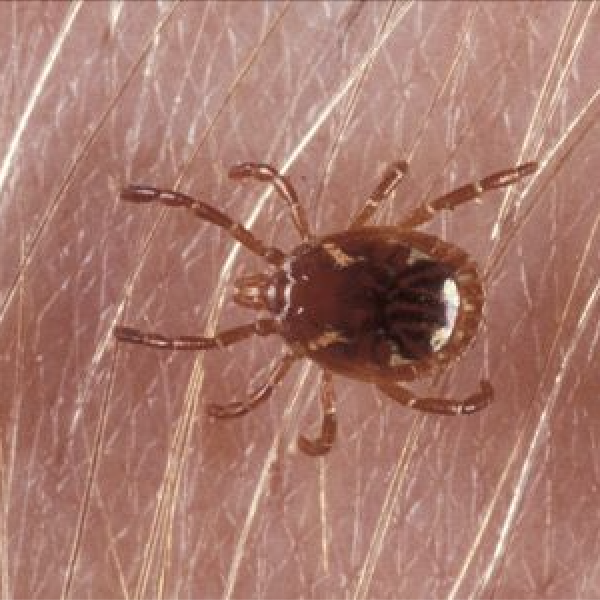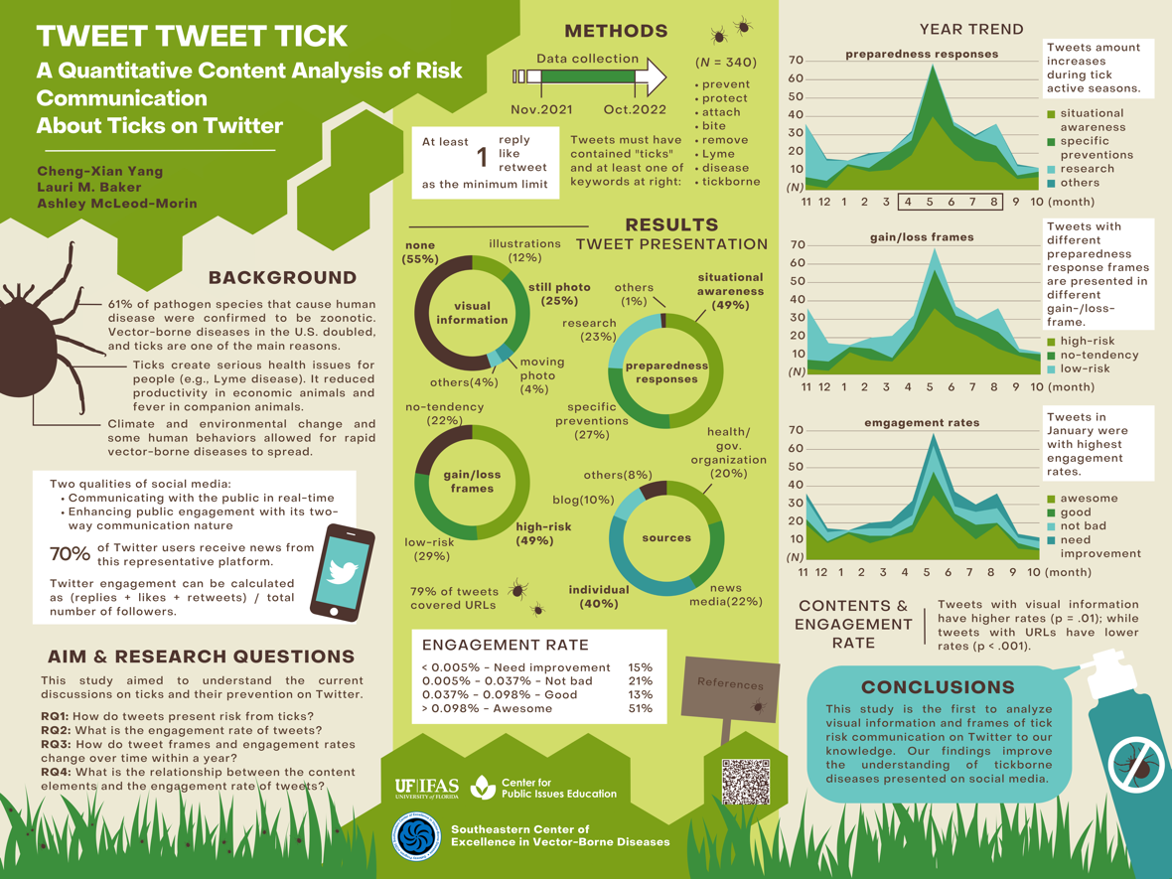Tick Talk
Vector-borne diseases in the U.S. have doubled and ticks are one of the main reasons why. The Center for Public Issues Education (PIE Center) has partnered with the Southeastern Center for Vector Borne Disease to understand public conversation and understanding about tick-borne disease to develop better educational programming for Florida growers and others who spend time outside.
Learn more about this project below!
Tick Talk: Let’s talk about ticks
The Center for Public Issues Education in Agriculture and Natural Resources (PIE Center) has partnered with the Southeastern Center for Vector Borne Disease to understand public conversation and understanding about tick-borne disease to develop better educational programming on ticks and tick-disease prevention.
Resources and additional learning on ticks, tick diseases, and tick prevention
Vector-borne diseases, like those from ticks, are on the rise, and two specific ticks are a focus of interest for Florida growers and their families:
LONE STAR TICK: Amblyomma americanum
WHERE FOUND: Widely distributed in the eastern United States, but more common in the South.
TRANSMITS: Ehrlichia chaffeensis and E. ewingii (which cause human ehrlichiosis), Francisella tularensis (tularemia), Heartland virus (Heartland virus disease), Bourbon virus (Bourbon virus disease), and Southern tick-associated rash illness (STARI).
COMMENTS: The greatest risk of being bitten exists in early spring through late fall. A very aggressive tick that bites humans. The adult female is distinguished by a white dot or “lone star” on her back. The nymph and adult females most frequently bite humans. Growing evidence suggests that alpha-gal syndrome (AGS) may be triggered by the bite of lone star ticks; however, other tick species have not been ruled out.

This information is from the CDC.
ASAIN LONGHORN TICK: Haemaphysalis longicornis
WHERE FOUND: These ticks were reported for the first time in the United States in 2017. Thousands of ticks may be found at a time in grass or shrubs or on an animals. As of April 13, 2023, longhorned ticks have been found in Arkansas, Connecticut, Delaware, Georgia, Indiana, Kentucky, Maryland, Massachusetts, Missouri, New Jersey, New York, North Carolina, Ohio, Pennsylvania, Rhode Island, South Carolina, Tennessee, Virginia, and West Virginia.
TRANSMITS: Research is ongoing.
COMMENTS: The Asian longhorn tick is a major concern for animal producers. This tick prefers cattle but will feed on dogs and cats. The Asian longhorn tick has been identified in 17 states and has devasted entire cattle herds in some cases. Calves are particularly vulnerable.
This information is from the CDC and the Bovine Veterinarian.

For more information about tick identification visit the CDC’s Tick ID Webpage.

Protect Yourself and Your Family: Tick Control and Prevention Methods for Humans

Protect Your Farm: Guide for Managing the Longhorn Tick on Your Farm

Tweet tweet tick: a quantitative content analysis of risk communication about ticks on Twitter

Science by the Slice: How researchers are using online search behavior to understand tick prevention

Specialty Crop Grower Magazine: Troublesome Ticks

Southeastern Center of Excellence in Vector-Borne Diseases
This resource page is supported by Cooperative Agreement Number U01CK000662 from the Centers for Disease Control and Prevention. Its contents are solely the responsibility of the authors and do not necessarily represent the official views of the Centers for Disease Control and Prevention or the Department of Health and Human Services.





















